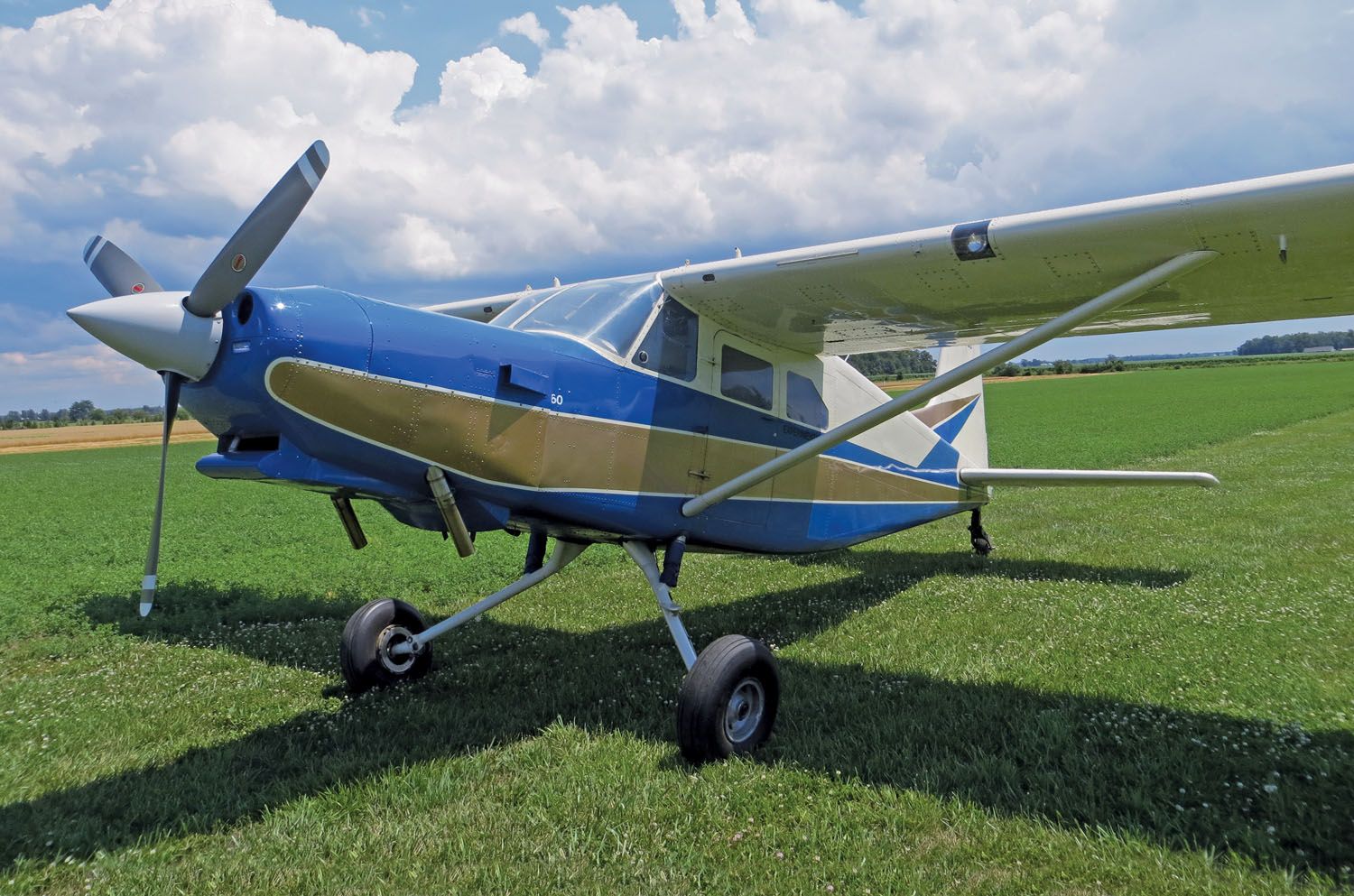 What single-engine airplane, almost as big as a de Havilland DHC-2 Beaver, designed by Al Mooney, certified by Lockheed, built in South America, Italy and South Africa, is now powered by a 383-cubic-inch Chevy V-8? Originally designated the L-402, Lockheed built two prototypes of the tricycle-gear utility airplane that first flew in 1959. Deciding it would not make a profit in the United States, it built more than 40 airframes in a joint venture south of the border. Called the LASA-60, they served the Mexican Air Force.
What single-engine airplane, almost as big as a de Havilland DHC-2 Beaver, designed by Al Mooney, certified by Lockheed, built in South America, Italy and South Africa, is now powered by a 383-cubic-inch Chevy V-8? Originally designated the L-402, Lockheed built two prototypes of the tricycle-gear utility airplane that first flew in 1959. Deciding it would not make a profit in the United States, it built more than 40 airframes in a joint venture south of the border. Called the LASA-60, they served the Mexican Air Force.
Italian aircraft manufacturer Aermacchi licensed the airframe and renamed it the AL-60B Santa Maria/Mari. For African customers, it moved the third wheel aft and designated it the AL-60C Conestoga. In South Africa, Atlas Aircraft Corp. later built 40 taildraggers under license, replacing the 250-hp Continental IO-470R or 260-hp TSIO-470 with a 400-hp, eight-cylinder Lycoming IO-720. Called the C4M Kudu, they flew with the South African Air Force until 1991.
The airplane will swallow six people or four 55-gallon drums whole. The design didn’t return home until the century changed, said Jerry Smith, who brought the only U.S. example back to life. With his partner, Ron Smith, it lives at his farm strip in Cygnet, Ohio, just a bit more than 30 miles south of Toledo on Interstate 75.
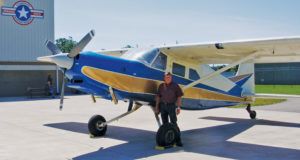
He heard about the Lockheed at EAA AirVenture 2001 or 2002. The Aviation Development Company, which manufactured the Bushmaster, picked up a bunch of airframes in Italy and brought them to the United States. “The airframe was perfect, almost brand new. It had been sitting in a warehouse in Italy, painted and ready to go since 1968, and nobody did anything with it.” Zinc chromate protected its parts and pieces. “When you opened the panels, it looked brand new. It was still on its transport gear; the main gear was still in Cosmoline, and the blue velour seats and nonskid deck were pristine,” Smith said.
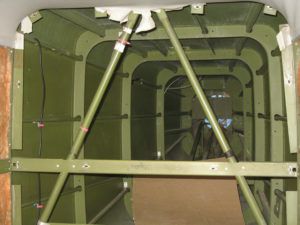
“We got a zero-time airframe and no logbooks. Luckily, they had an IO-720 firewall forward that we were able to measure and weigh on several scales” that all read almost 1300 pounds. Mounting an IO-720 was never part of the plan, said Smith. Beyond the initial cost of a new or rebuilt eight-cylinder powerplant, which is “out-of-sight, I could not afford the price of 23 to 25 gallons of avgas an hour.”
Smith had a Chevy small-block stroker in mind, a V-8 that displaces 383 cubic inches and provides 450 foot-pounds of torque at 4500 rpm. A Geschwender Morse Hi-Vo silent chain drive with a two-to-one reduction would connect it to the prop. The reduction unit transfers about 98% of that torque to a Hartzell constant-speed prop with an 86-inch diameter and three 7.125-inch-wide blades.
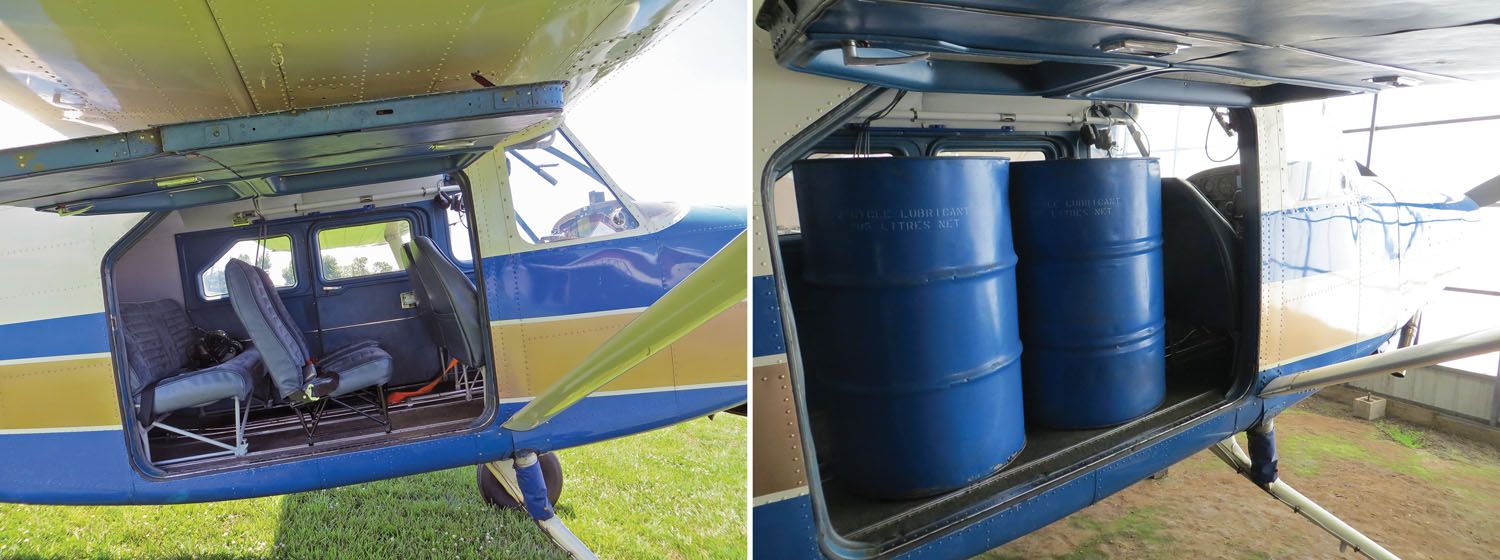
“The 2-inch-wide chain drive isolates the vibrations and oscillations, and has a tensile strength of 20,000 pounds,” Smith said, adding that the crankshaft will never exceed that. “The harmonics are gone because, as the rpm increase, the chain runs in a slight arc. A spray bar by the pickup point lubricates the chain with engine oil 100% of the time. GM has been using this same type chain in the transfer case for four-wheel-drive trucks for a very long time.”
It provides many other benefits beyond its efficient transfer of power. “At 3000 engine rpm, 1500 prop rpm and 24 inches [manifold pressure], we cruise at 125–130 mph, burning 11–12 gph of auto fuel. And being that it is not a gear reduction, it makes no noise and very little heat.”
With the zero-time, like-new airframe, most of the work was firewall forward. They did mount a “Garmin flip-flop radio, a King transponder, an excellent PS Engineering push-to-talk intercom, and the water cooling pressure and temperature gauges in the panel.” Flying IFR was never in the plan, but Smith did install a vertical-card compass.
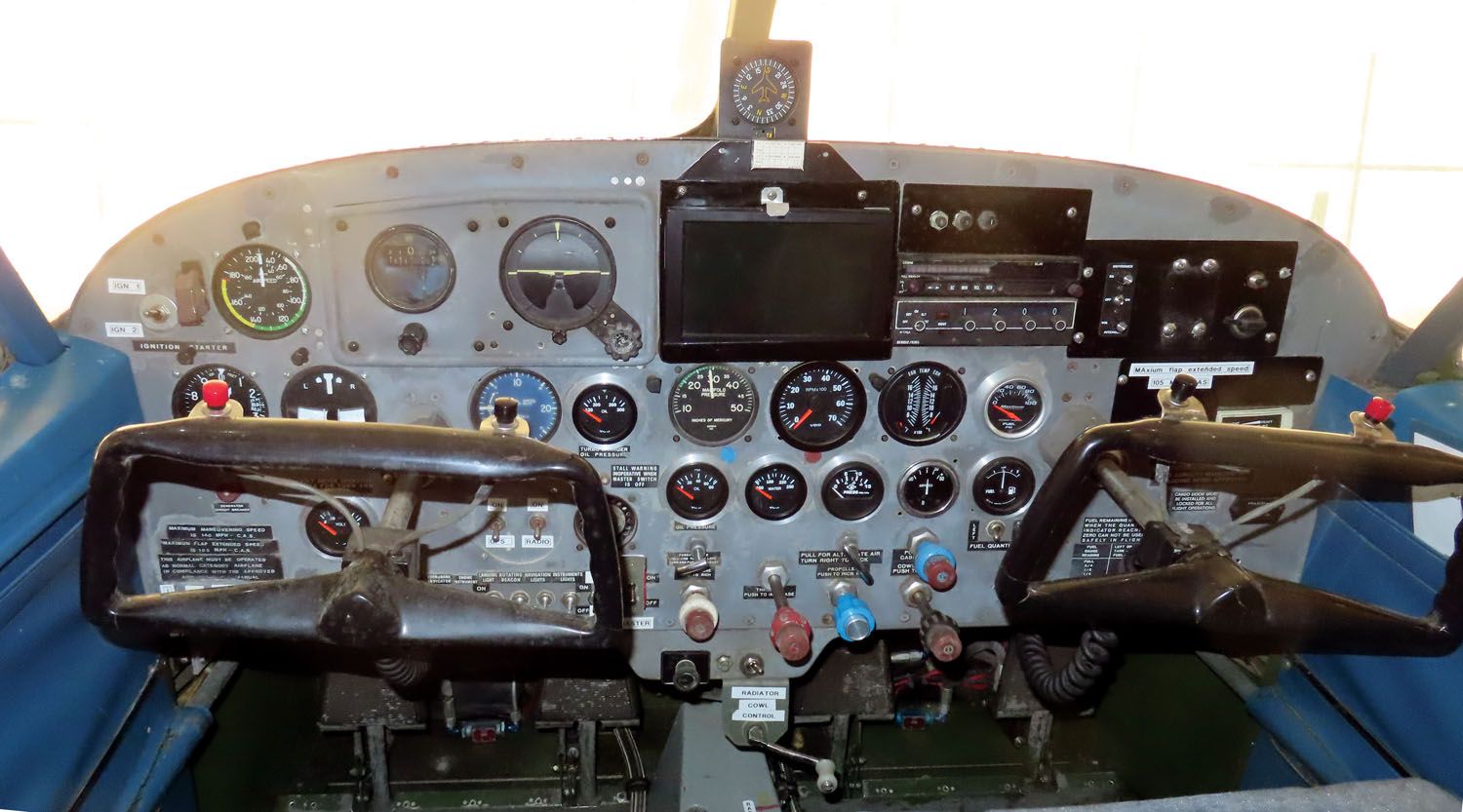
Creating the StarMaster
Before turning a wrench, Smith sat down with Great Lakes FAA inspector Stan Faske. “I talked to him eyeball-to-eyeball so we’d know up front that if we put a Chevy in it and it worked, he’d approve it.” Smith renamed the big airplane the StarMaster when the FAA signed it off as an Experimental Exhibition airplane on July 14, 2010. “We can fly anywhere in the United States we want,” he said, “but the FAA likes to get a list of the airports we’ll be visiting.”
Smith knew what he wanted for a powerplant, “something solid, with a cast iron block,” he said. “Being an old farm guy, torque is my only interest. I wanted 450 foot-pounds at the crankshaft at 4500 rpm. That was the key. With a 2:1 reduction unit, that delivers about 900 foot-pounds of torque at the prop hub at 2350 rpm.”
Knowing what he wanted was one thing. Finding it was another. The engine was easy. He bought a Chevy 383 stroker, new in the crate. A 383-cubic-inch V-8, “it is a truck engine with good cooling between the barrels and a good margin between the cylinder bores for sealing the head gaskets.” GM has several versions of it, and it’ll handle 600, 700, 800 horsepower.
Finding the Geschwender reduction unit was a hide-and-go-seek effort that started in 1988 when Smith first learned about it and its bulletproof reliability. “They used it in a number of airplanes, including crop dusters and on the 620-cubic-inch Chevy that powered the Performance Aircraft Legend,” which later swapped the V-8 for a Walter M601 turbine.
Fred Geschwender died of cancer on July 18, 1998 in Lincoln, Nebraska, and production of his reduction units seemed to have passed with him. Smith did track down a man who worked with him, Dave Roth. “His wife answered and said talking to him wasn’t going to happen because he’d passed.” Explaining that he was looking for a Geschwender reduction unit, she said there was one in her garage she’d sell to him. “I got in the car and drove there.”
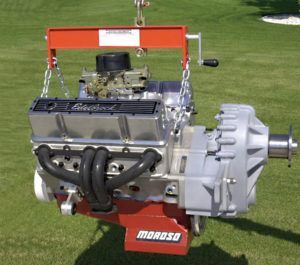
While in Lincoln, he found the crop duster that flew the first Geschwender reduction unit and photographed it, its Airflow Performance fuel injection system, and the fuel and oil lines and water cooling system from every angle.
Unfortunately, the garage reduction unit didn’t have a hollow shaft, needed for a constant speed prop, but Smith bought it anyway. Later, reading Trade-A-Plane, he learned about a pilot in Mount Pleasant, Michigan, working on a Seabee who had some Geschwender parts. That included a complete reduction unit set up for variable pitch. “We used that unit and sold the other one.”
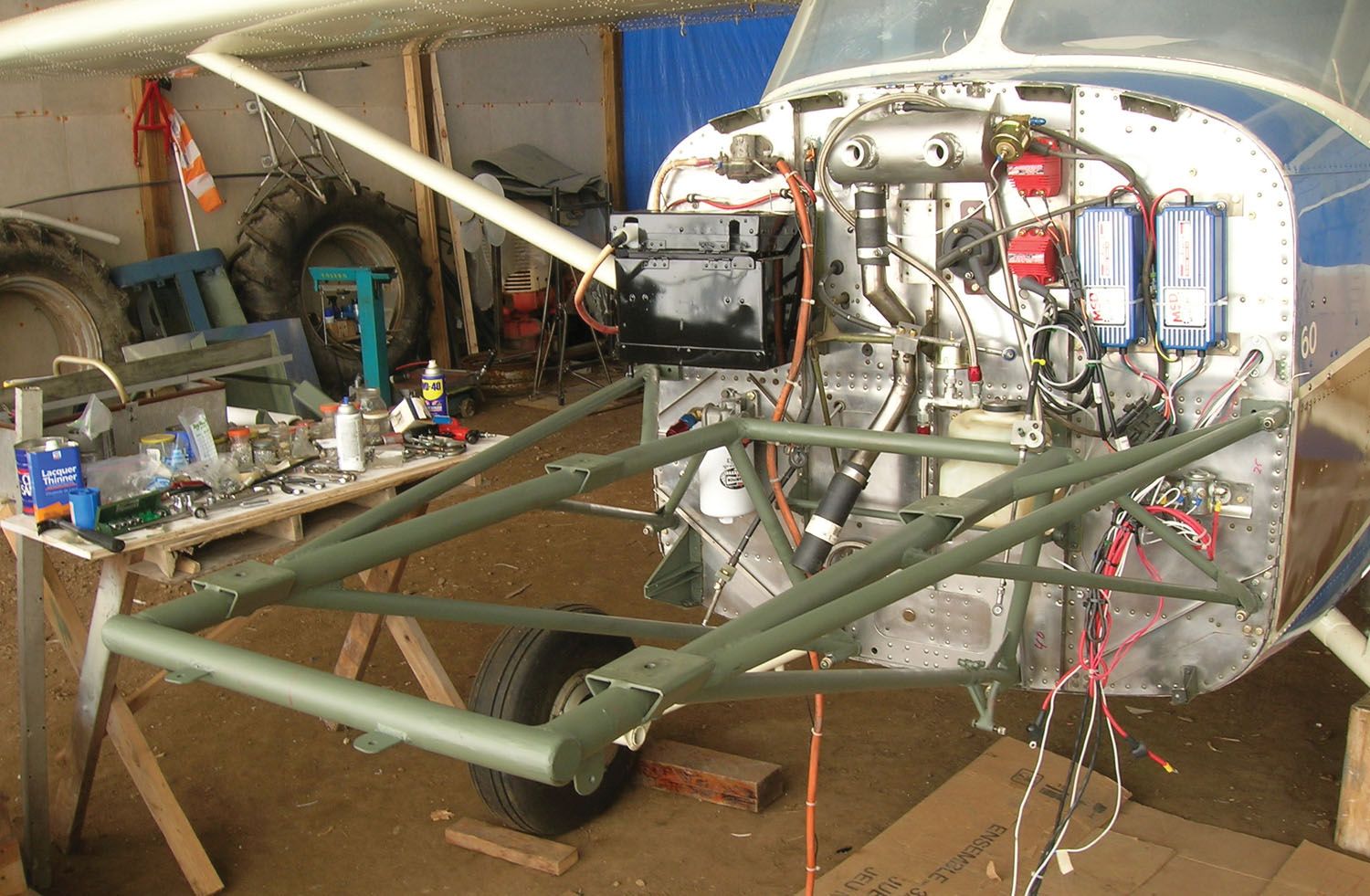
While Smith was unable to concisely articulate why he undertook such a large project, he had no doubt that “somebody is watching out for me up there because all this stuff fell into position. How in the world would we come across this airframe, number one, and then, number two, how did we come across the reduction unit and then end up with another reduction unit from Mount Pleasant, Michigan.”
Finding a fuel injection system was the next step. He didn’t want a computerized system because, “for me, it is too much to go wrong.” Airflow Performance has made mechanical fuel injection systems for certificated airplanes for decades, and that is what was on Smith’s shopping list.

During his Geschwender search, Smith talked to “a guy in California putting Chevy engines in three-quarter-scale P-51 Mustangs.” During the reduction conversation, he said, “By the way, do you need a fuel injection system? Send me a check and I’ll send it to you. He told me to call Don Rivera at Airflow Performance before installing it on the engine so he could test it on his flow bench.”
Noting that “Don is one great guy and his company is first class,” Smith spent a day at the Airflow facility in Spartanburg, South Carolina. The system tested fine, and “I went through several hours of school on how it operates, and it is slick, all mechanical—no electronics.” It draws fuel from two wing tanks that together hold 72 gallons.
After uniting the airframe and powerplant, “we bolted the fuel injection system to the Chevy V-8,” Smith said. “Don told us to run red firesleeve from the firewall to the control head. That sleeve will handle 450° F. Not counting the injector lines running to each cylinder, that is the only fuel line running from the firewall to the engine. The boost pumps and fuel filters are all in the belly, where it’s nice and cool.”
NASCAR has been using MSD high-energy ignition systems for decades, Smith said. “The distributor is a dual system with two exciters, two boxes and two coils, but just one set of spark plugs. How often do spark plugs fail in 100,000 miles?” he asks.
“Two rock-solid Delco Remy alternators” provide a redundant 65-amp power supply. “They are one-wire alternators, so unless they are excited, they will just sit there and run. There’s a relay that will switch from one to the other, or off, but we can’t bring both of them online at the same time.”
Finding a prop for the StarMaster was a challenge. “When you talk to most people about putting a Chevy engine in an airplane, you suddenly hear a dial tone. Les Doud at Hartzell was the only one who would talk to me about it. We worked on the engine and ratios and came out with about 1200 pounds of static thrust,” Smith said.
“At cruise, with the engine at 3000 rpm, that’s 1500 at the prop; with those big, wide blades, it will just run forever at 11 gph of auto fuel. I can afford to fly it at a [fuel-only] cost of 35 bucks an hour,” Smith said, chuckling. “The hourly fuel bill for an IO-720, gulping 24 to 26 gph, would be $125 or more, depending on where you buy your 100LL.”
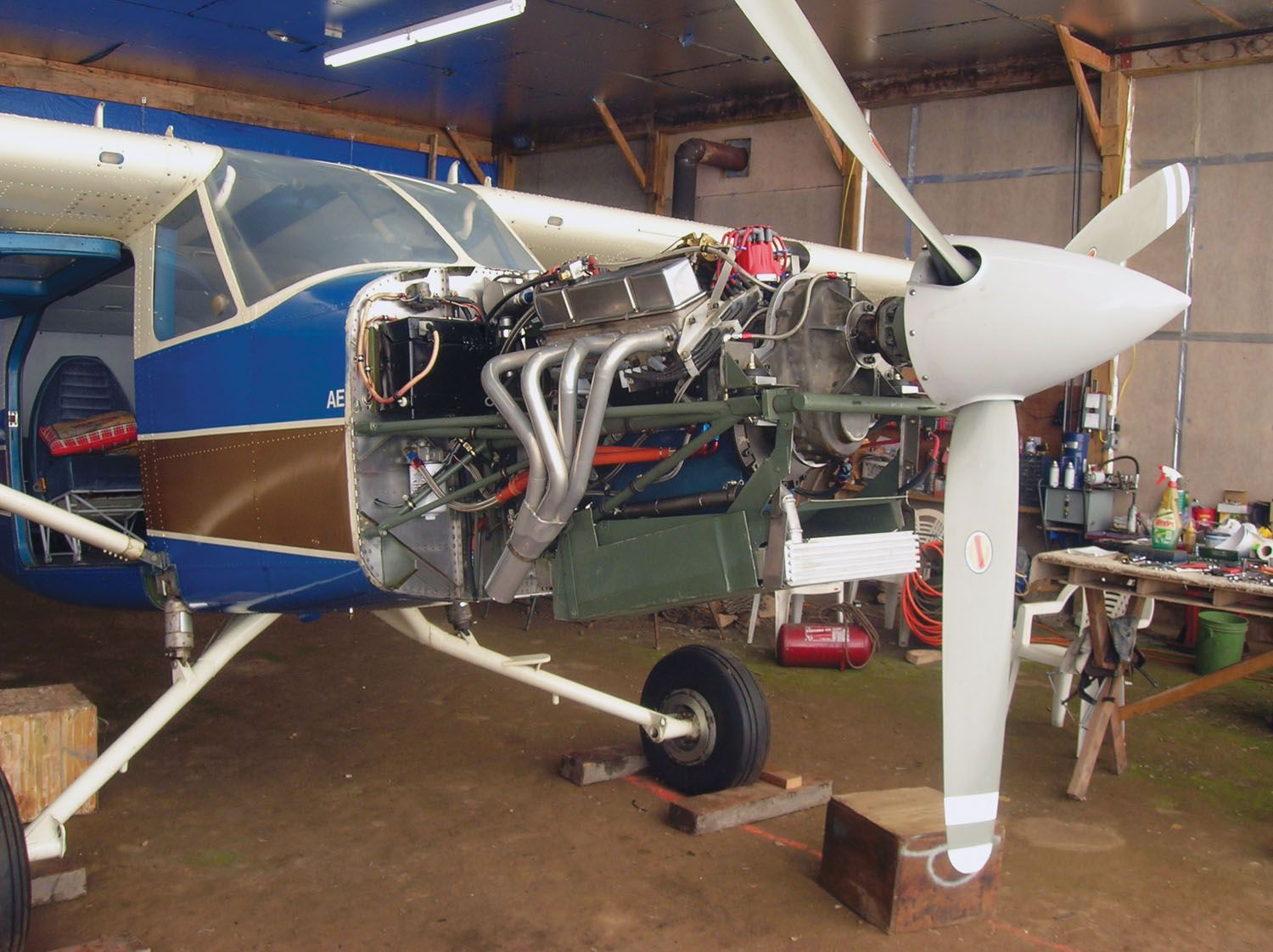
Farm Flying
The StarMaster’s creator, now 79, is as unique as the airplane. “I’m a basic old farmer, and I built this thing for reliability.” He did all the work in the 100-by-45-foot building off to the right side of his 1200-foot farm strip.
Smith started flying in the early 1960s. After logging several hundred hours in Aeronca Champs, he joined the Army and logged 850 combat hours in a UH-1C gunship in Vietnam. He finished his enlistment as a maintenance test pilot and Huey and Cobra instructor at Fort Eustis, Virginia. Discharged in 1970, he joined the Ohio National Guard and flew Hueys until 1993.
“I knew that when I stopped flying military stuff, I was gonna have to afford to fly something else.” When he got out of the service, the prices for Cubs and Champs were climbing out of reach. “I always liked the lightweights, so I started working with CGS Aviation out of Cleveland and flew one of the first kitbuilt Hawks in 1984.” He’s still flying it. Smith now oversees the operations of three farms, each of them some 30 miles distant, and he sometimes commutes to them in the Hawk.
First-flight preparation began with an AL-60C operating manual. “It said the approach airspeed should be 75–80 mph.” During the Phase I testing period, “I did a couple of stalls,” he said. “With the Fowlers out, at 60 mph indicated, it just settles like you let the air out of the tires. When you retract the Fowlers, it stalls right close to 80 mph indicated—no buffeting, nothing nasty, just a very smooth break as the nose falls through the horizon.”
The StarMaster flies best with two pilots, Smith said. “It takes two of us to get this thing in and out” of its home and the 1200-foot turf strip. “The tailwheel must be locked, and on takeoff you do not raise the tail. Do not! If you lift the tailwheel, you’ll be making a hard left turn and go right into the field. When it reaches 60, which it does quickly, it leaves the ground anyway.”
With its Fowler flaps, the StarMaster doesn’t spend much time on the ground. “But you do not unload the flaps after takeoff. We don’t retract the flaps until we’re established at 90 mph.” The Fowler flaps have three positions, up, down and halfway between, with a big overhead pull-down handle muscling them to the desired setting.

Smith begins his landing approach about 2 miles from his farm strip. “I get it slowed down, set the prop and the throttle. I fly outside the airplane and the copilot monitors the airspeed and altitude above the cornstalks. We don’t let it get slower than 75 or 80, which keeps it in a level stance with the power on. Even at a half-mile final, that 1200-foot stretch of grass sure looks short,” he said.
“Right at the end of my strip is a ditch, and you do not want to catch the tailwheel in it. I maintain power on approach until 50 feet from the ditch, then chop the throttle and push the wheels down on the turf. As soon as they touch, tap the brakes—just tap them. When the tailwheel settles down, then you can get on the brakes and burn up the grass. We use about 700 to 800 feet, depending on the wind.”
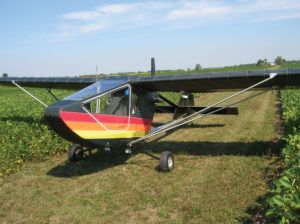
On the first flight, Smith went to a nearby airport for more landing room. “We found on approach with the Fowlers out that even from 800 to 900 feet on final approach, when you can see the numbers just over the nose, if you chop the throttle, you will not make the runway. It’s a rude awakening. It takes a firm hand to control the aircraft.”
The StarMaster hasn’t gotten much exercise since his partner “fell from the hay mow,” Smith said. “He’s not in any condition to get in the airplane.” Unable to fly anymore, his partner wants to sell the airplane. “We had some people from Alaska here this past spring to look at it, and I’m kinda glad they backed out because I don’t know if they were up to handling an airplane of this size.”
Several builders are interested in the firewall forward for their fighter plane project, and another fellow in Texas is looking at the airframe and thinking of mounting a PT6 turboprop and upping the gross weight to 6000 pounds, he said. “So we may part it out.”
Photos: Jerry Smith.










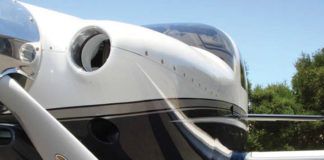
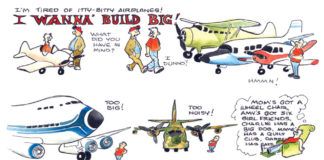
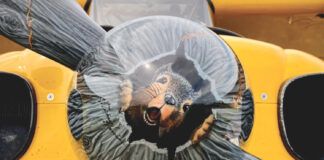
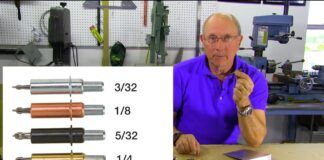
Do you have any information of the 2 cylinder Franklin model 2A120 A,B engines. I am looking for complete or parts?